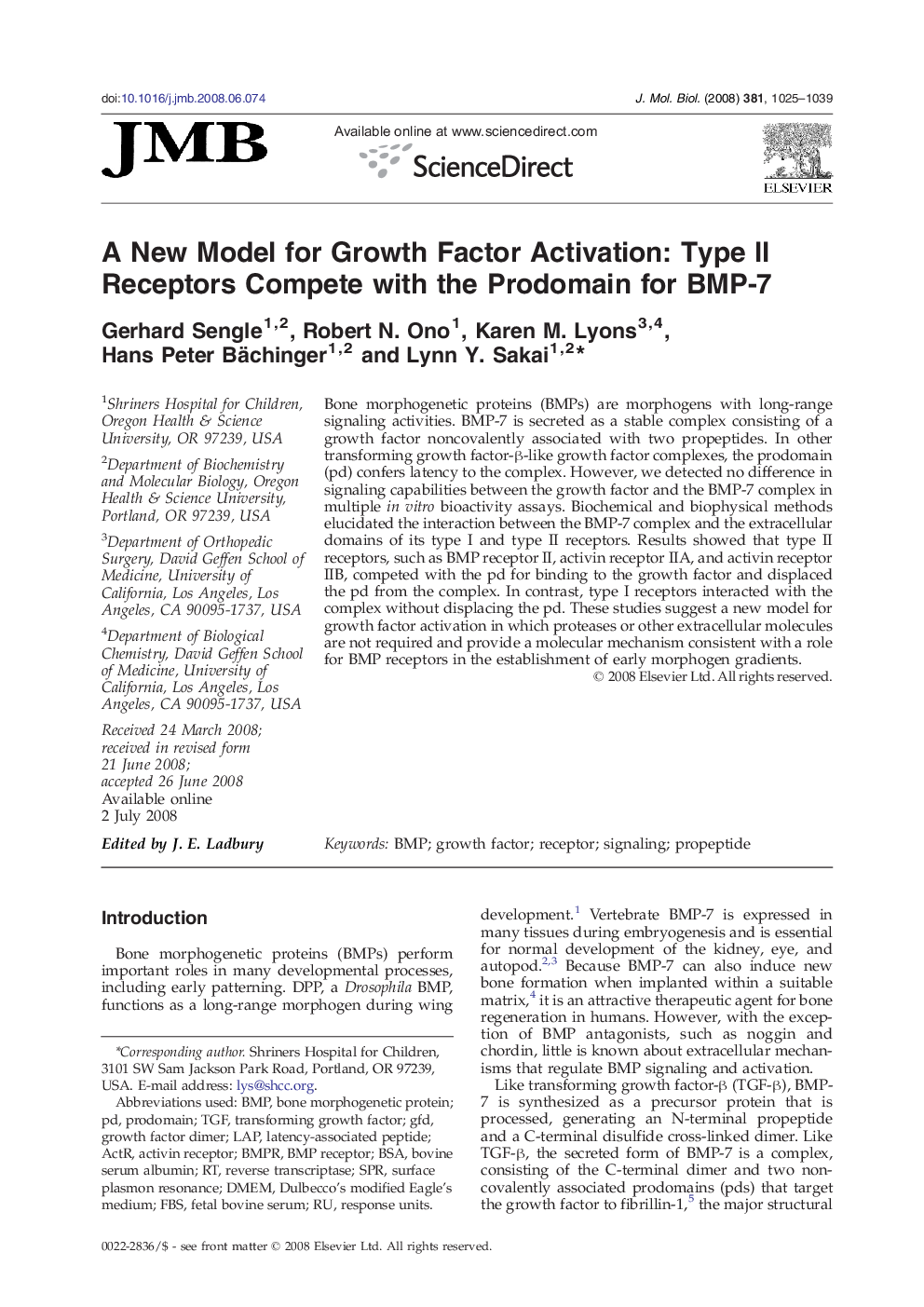| Article ID | Journal | Published Year | Pages | File Type |
|---|---|---|---|---|
| 2187087 | Journal of Molecular Biology | 2008 | 15 Pages |
Bone morphogenetic proteins (BMPs) are morphogens with long-range signaling activities. BMP-7 is secreted as a stable complex consisting of a growth factor noncovalently associated with two propeptides. In other transforming growth factor-β-like growth factor complexes, the prodomain (pd) confers latency to the complex. However, we detected no difference in signaling capabilities between the growth factor and the BMP-7 complex in multiple in vitro bioactivity assays. Biochemical and biophysical methods elucidated the interaction between the BMP-7 complex and the extracellular domains of its type I and type II receptors. Results showed that type II receptors, such as BMP receptor II, activin receptor IIA, and activin receptor IIB, competed with the pd for binding to the growth factor and displaced the pd from the complex. In contrast, type I receptors interacted with the complex without displacing the pd. These studies suggest a new model for growth factor activation in which proteases or other extracellular molecules are not required and provide a molecular mechanism consistent with a role for BMP receptors in the establishment of early morphogen gradients.
